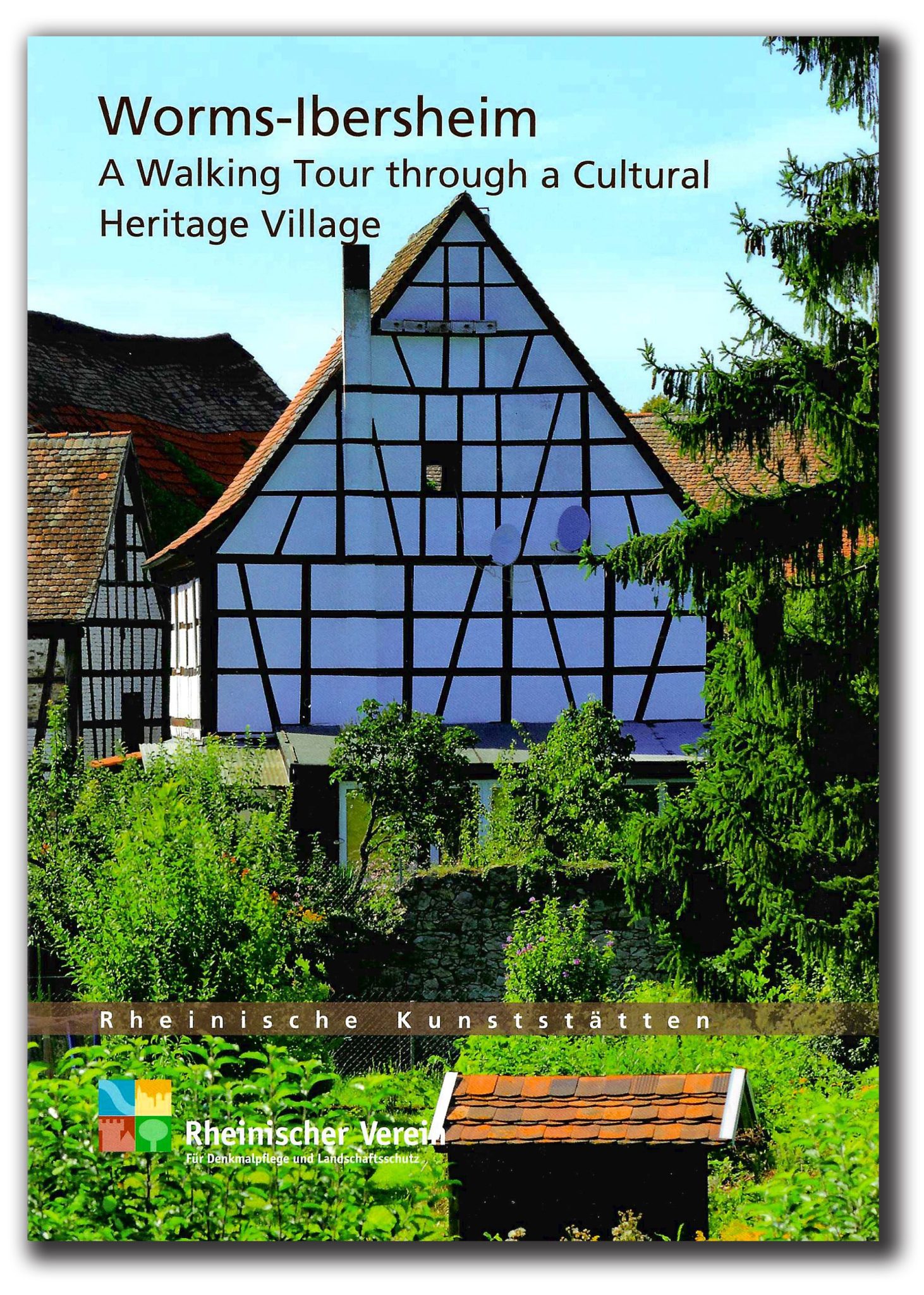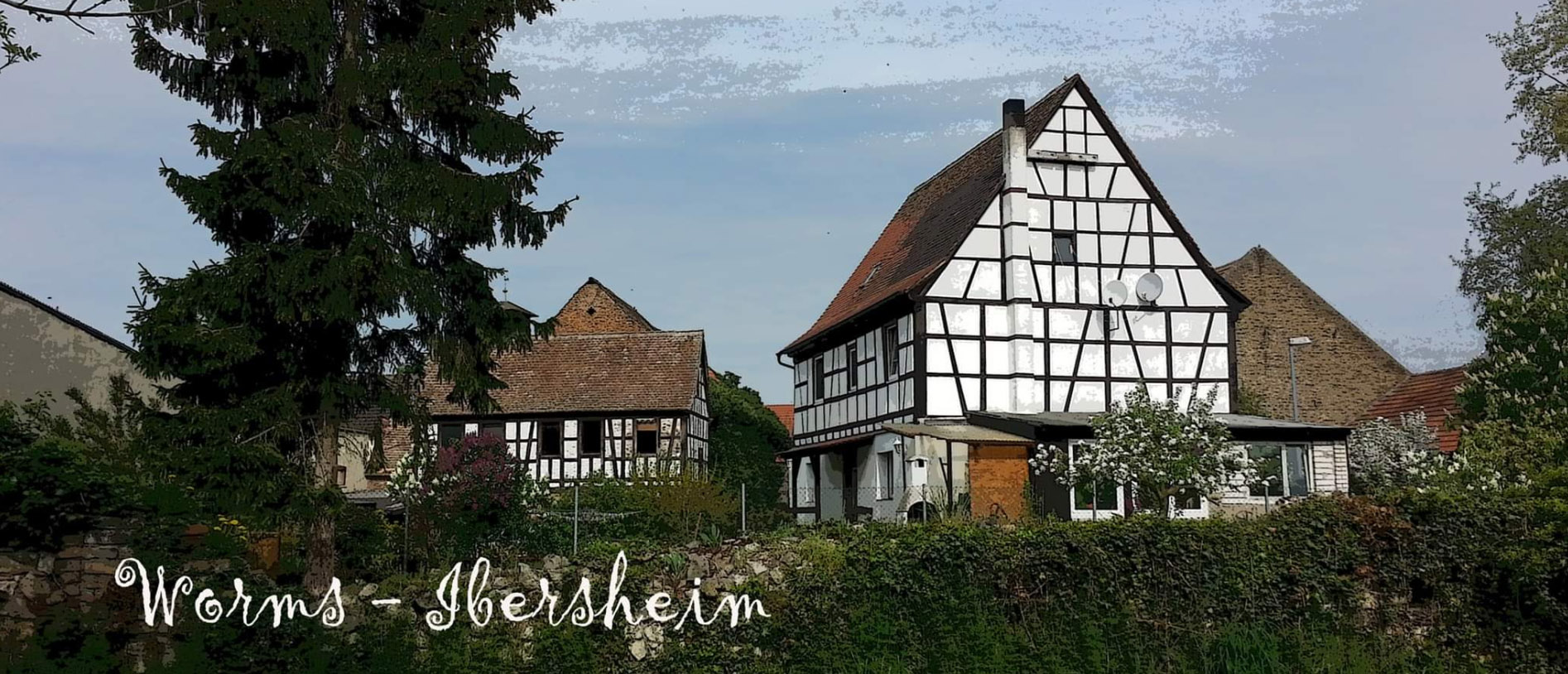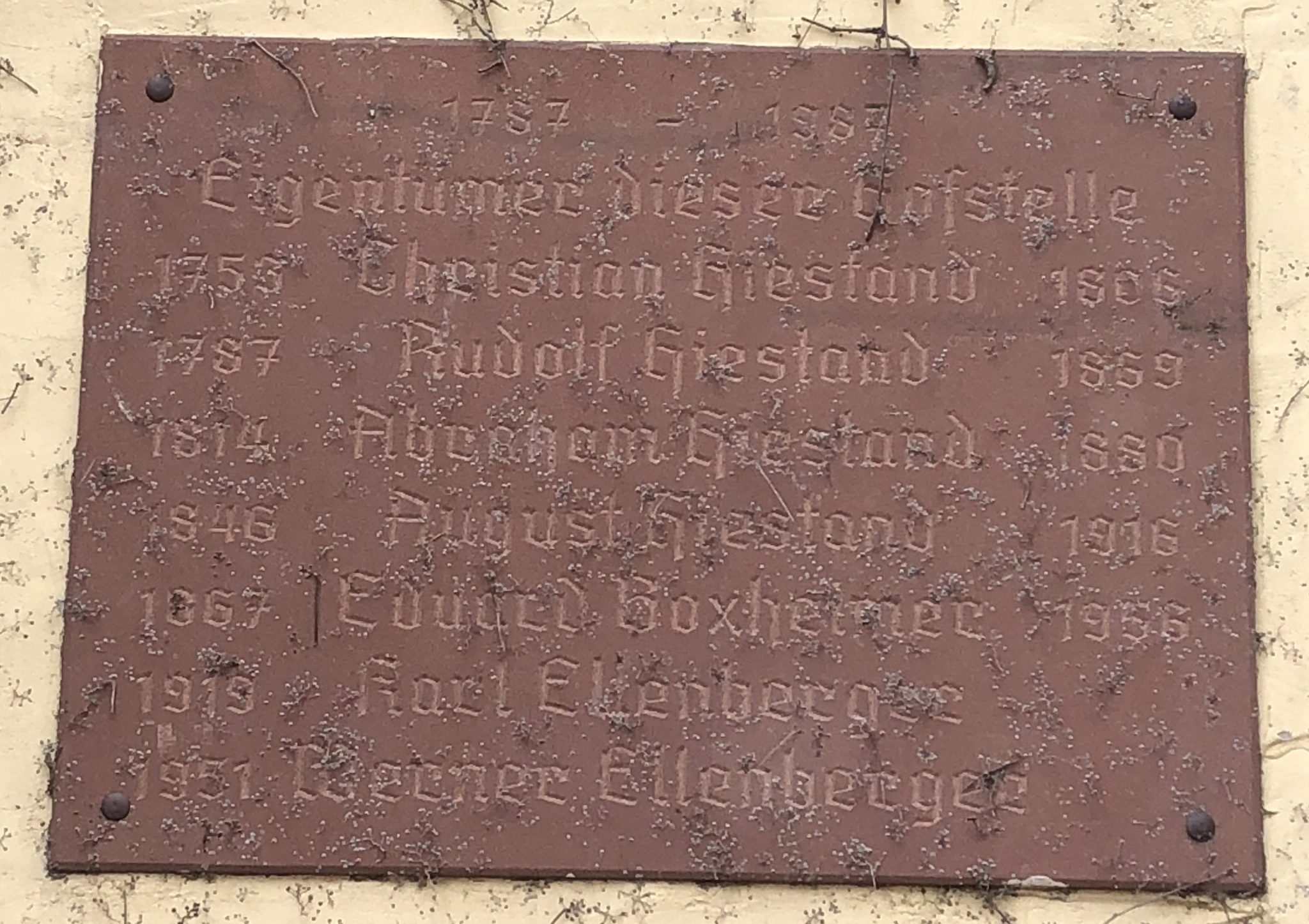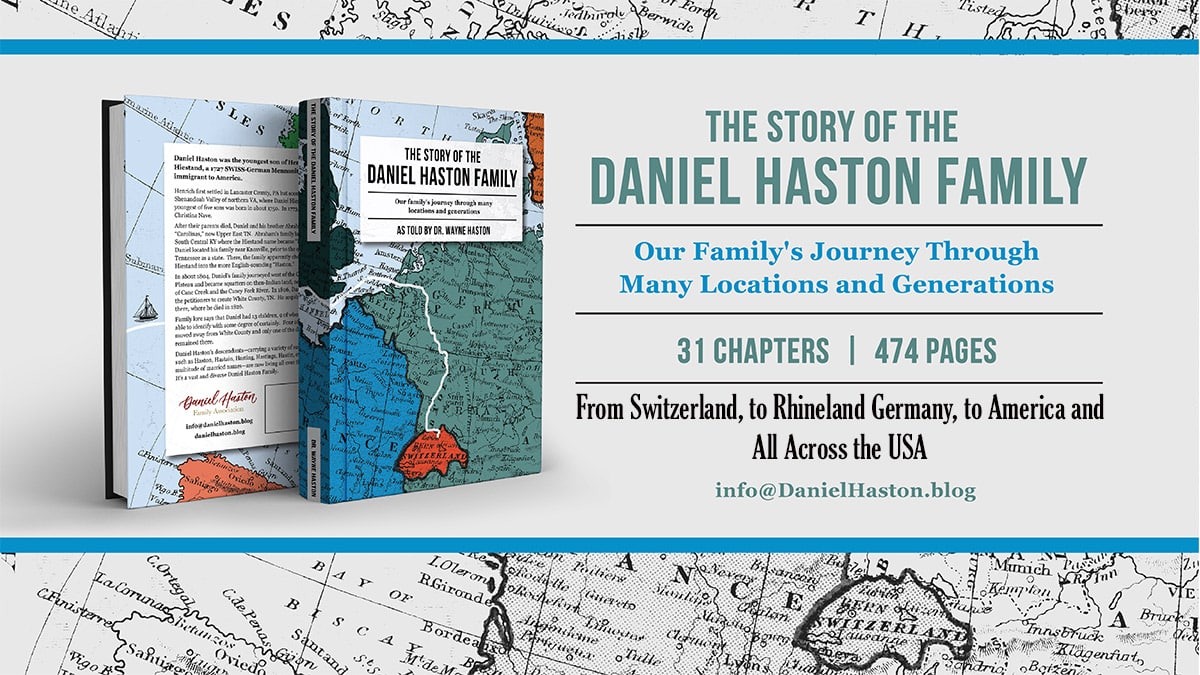30 - Our Ancestors' Little German Village of Refuge - Ibersheim
On Sunday, June 25, 2023, our Hiestand-Haston Heritage Tour group will visit this very special place. We have been invited to join the village’s Mennonite Church for their Sunday morning service, be their special guests for an after-church “Grillfest” (BBQ), then take a walking tour through this historic village on the very streets where our ancestors walked many years ago.

The village of Ibersheim is situated on what historically was an unprotected floodplain on the left bank (west of) the Rhine River, just below a sharp northeastward bend in the river, about six miles (12 km) northeast of the center of Worms, Germany.

When the Swiss Mennonites entered the Palatinate after the Thirty Years War, most of them settled in villages. Not only was there a greater chance of freedom from oppression in the villages, as compared to the cities, but the villages were where their superb farming and viticulture skills were needed. If the post-war Palatinate was going to be restored, it would need to begin with the farms and the vineyards. And no group was better prepared for that task than the Swiss Brethren who, for more than 100 years, had been forced to eke out a farm living on shallow-soil of small and steep-mountain farms, high in the Swiss Alps.
There were many villages in the Rhineland where they were needed and welcomed. But the village of Ibersheim (or Ibersheimerhof, as it was then called) stands out as a Palatinate village that became identified as a uniquely Swiss Mennonite community. After the Thirty Years War, Ibersheim was…
a ruined estate with several hofs [farms] some six miles down the Rhine from Worms. Here, for reasons unexplained by historians, there had been latitude for the Mennonites to own land [in the Ibersheim estate] even before the great Electoral Concession [of 1664]. Its meadows and fields lay on either side of the great river, and some crops had to be ferried across.[i]
[i] John L. Ruth, Maintaining the Right Fellowship. (Eugene, OR: Wipf & Stock Publishers, 1984), 43.
Of all the Mennonites worldwide, it has been said that around 10% originate in or around Ibersheim.
Two of the earliest Swiss refugees to settle in Ibersheim were Konrad and Kleiann Hiestand, brother and sister. They were grandchildren of Heinrich and Anna Lutholt Hiestand from Richterswil in Canton Zürich, where Anna was on record as being an Anabaptist. Konrad and Kleiann, who apparently had adopted their grandmother’s faith, left their Swiss home in 1657. Kleiann married Jacob Brubacher, a neighbor she probably grew up with in Richterswil. She and Jacob lived next door to Konrad’s family in Ibersheim.[i]
[i] J. Ross Baughman, Apart from this World. (Edinburgh, VA: Shenandoah History Publishers, 1997), 72.
A special permit of 1661 and a unique concession of 1664, probably indicate how desperate the Elector was for expert farmers and how quickly he became impressed with his new tenants.
In 1683, nineteen years after the 1664 Concession, ten Mennonite men, who were heads of families in Ibersheim, were granted extraordinary rights not enjoyed elsewhere in the Palatinate. Konrad Hiestand (from Richterswil in Canton Zurich, Switzerland) was one of the specially privileged ten.
On the September 10, 1685 Mennonite census for Ibersheim, two Hiestand families were mentioned: Conrad Hiestandt, 5 children and 2 stepchildren and Hennrich Hiestandt, 10 children
The chief bailiff, who was not unfavorably disposed toward Mennonites, reported to the Elector that “Ibersheim Mennonites had changed their temporary state into a state of succession and so that they had a stationary domicile [permanent home] in the head office.” In his December 1685 letter to the Elector, he described these Mennonites in this way:
- They bear no arms and weapons, so that they could not be drawn in a committee.
- They do not swear an oath.
- Concerning their rule to administer the Holy Sacraments (except no baptizing of their children until they come to the age of understanding), mostly living in the order of the Reformed religion (taught by the Catechism of Heidelberg at a good part).
- Praying the Lord’s Prayer in the same way.
- Elect one of them who lectures their rules to them and gives admonition to them, named “admonisher” because of that.
- Everyone has to testify that they act peaceful and calm, living in peace with their neighbors, working diligently and being obedient, true, and constant toward authorities.[i]
[i] “Mennonites at Ibersheim, Germany,” 88.
A Few Scenes from a Walking Tour through the Village of Ibersheim

There's a story behind all of these Ibersheim pictures - you'll hear them on the tour.
House Built by a Hiestand Family in 1787


Contact Renee Cue (renee@reneecue.com) to express your interest in joining the tour group, or asking for more information.


2 thoughts on “30 – Our Ancestors’ Little German Village of Refuge – Ibersheim”
I am very interested in this tour. I have seen a Hiestand Winery label and have heard it was near Ibersheim. Is it possible/time for/ me to go there for a quick visit. My Hiestand ancestor was a distiller. Thought it would be fun.
I’ve heard of that. I think we’ll be there on Sunday so I don’t know if it will be open or not. Can you check on it?